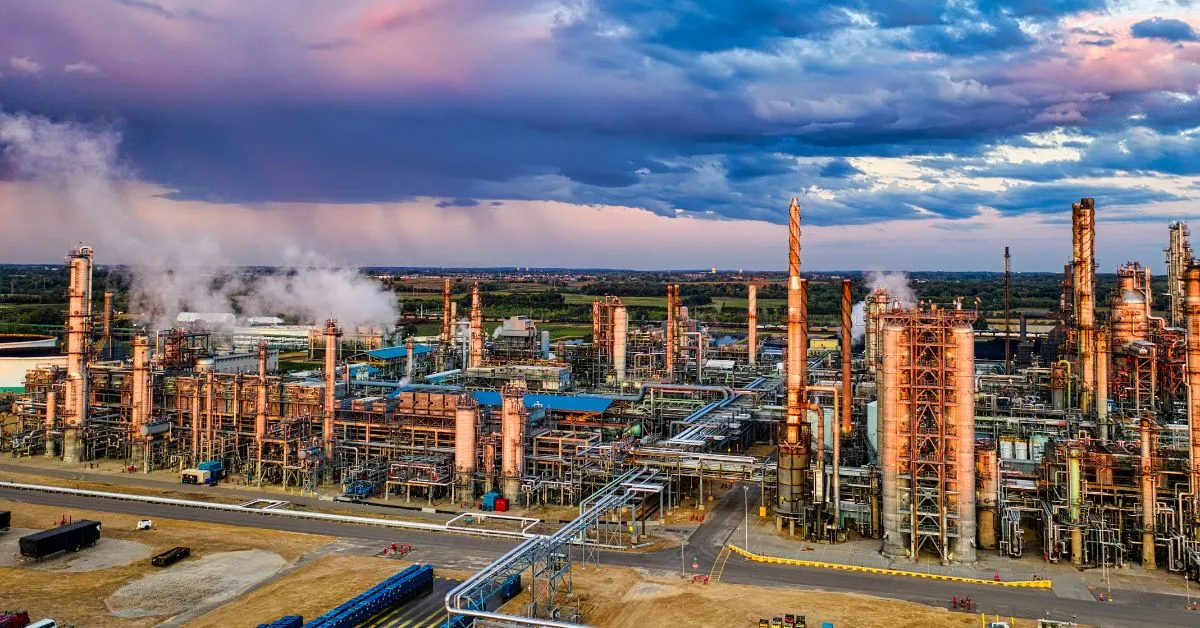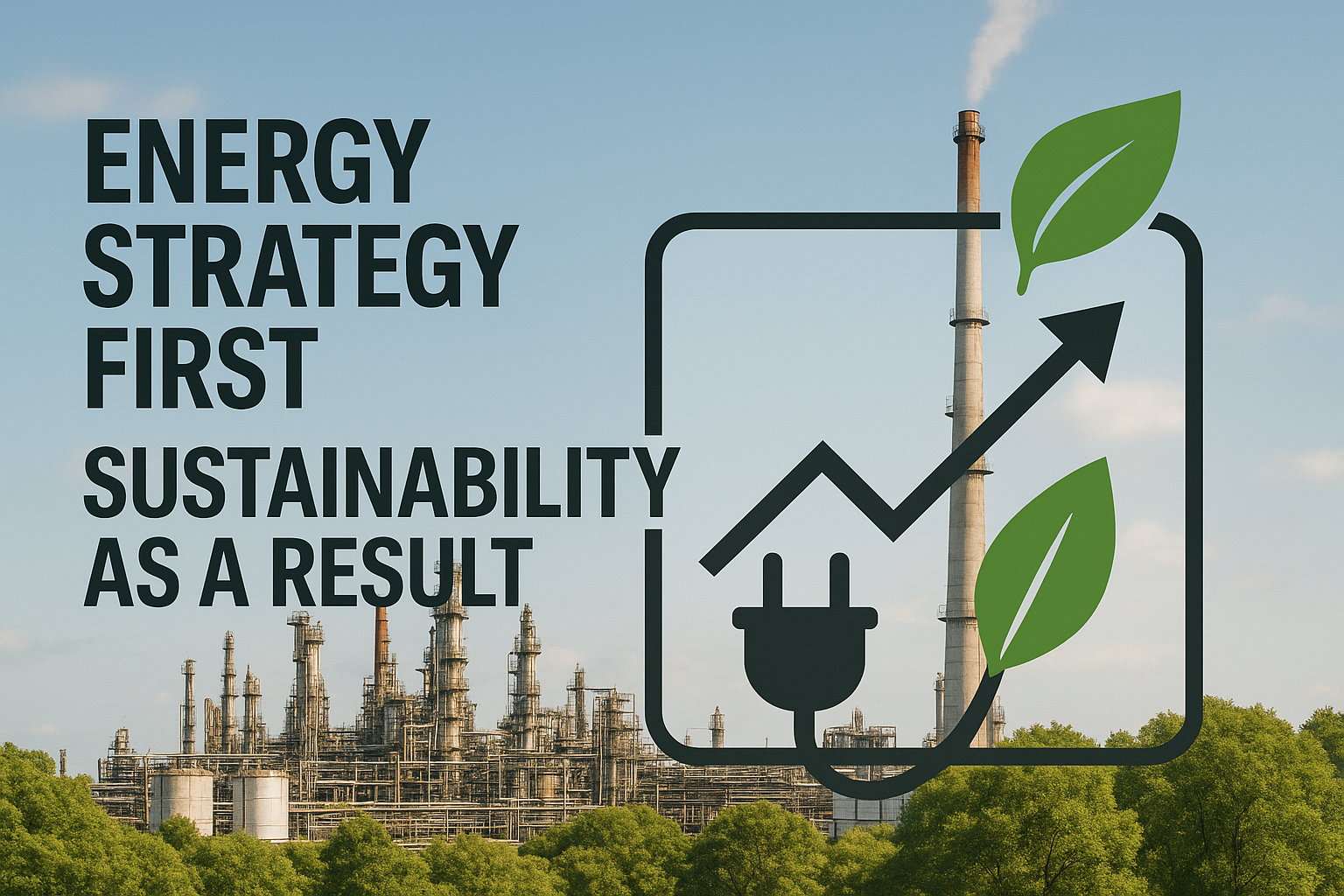If you run a polymer plant, you already know that energy is one of your largest controllable costs. Energy regularly absorbs 20–30% of total production expenses, with most of that draw coming from electricity-hungry systems such as extrusion, injection molding, and blow molding — all core operations that run almost nonstop.
Volatile power prices and tightening decarbonization mandates are squeezing margins, making every kilowatt-hour and every therm count.
Three practical strategies can tilt the balance back in your favor. Each approach is grounded in proven process-industry methods and relies on data you already gather, so you can start improving energy efficiency without major capital projects.
Energy Management Challenges in Polymer Production
When power consumption already claims roughly a quarter of your plant’s controllable operating costs, every extra kilowatt matters. Yet polymer production makes efficiency challenging. You run multiple high-energy systems, extrusion, injection molding, and blow molding, each with its own temperamental mix of temperature, pressure, and screw speed.
Feedstock quality swings force frequent set-point changes, while aging motors and heaters leak mechanical efficiency. Because data lives in siloed historians, spreadsheets, and lab systems, your teams rarely see consumption trends in real time, making the process’s non-linear dynamics harder to control.
External pressures compound these constraints: volatile power prices erode margins, decarbonization mandates demand proof of lower emissions, and rival process industry leaders keep pushing production costs down. To regain control, you need a clear path: first, make energy use visible as it happens, then link process conditions to that energy draw, and finally automate high-impact setpoints with AI-driven optimization.
1. Make Energy Use Visible in Real Time
Waiting for monthly utility bills or siloed log sheets means missing the exact moment when heaters drift out of tune or compressors run unloaded. Modern energy management systems pull flow, steam, and power data from every meter into a single historian. Front-line operations see waste as it happens, not days later.
Start by networking existing plant meters, then fill obvious gaps with sub-meters on high-draw points; extruder main drives, reactor steam loops, compressed-air headers. With that data streaming, build live dashboards for each line so operators can track kWh per kg of polymer, steam per batch, and compressed-air kW per tonne while they run the unit.
A Performance Characteristic Line across those dashboards quickly shows the plant’s true base load. Even a small downward shift frees meaningful electricity for production. Many teams prove the value by focusing first on extrusion, the heaviest load center.
Centralizing consumption data across units and visualizing it live helps teams respond faster and find hidden inefficiencies. Visibility alone often trims several percent from the power bill, though data quality, historian gaps, and legacy controls must be resolved early to capture those improvements.
2. Link Process Conditions to Energy Performance
Even minor tweaks to temperature, pressure, or feed rate ripple through the line, shifting the kilowatt load you pay for each kilogram of polymer. A slight rise in screw speed raises motor demand while a lower barrel temperature increases heater duty, yet both can be balanced to cut specific consumption. Similar cause-and-effect patterns surface in injection molding.
You uncover these links by unifying historian tags, screw speed, barrel and die temperature, melt pressure, with power KPIs, then running quick regression screens or a digital twin–style model. Each week, pull a simple cause-and-effect Pareto chart and heat-map the outliers where kilowatt spikes occur even while quality stays on-spec.
When done alongside operations and maintenance teams, it often exposes a handful of “rogue” setpoints that, once tightened, trim 2–4% of total consumption while holding production steady.
Lock those learnings in place: document best-practice operating windows, post them at the distributed control system (DCS), and revisit them whenever resin grade or ambient conditions shift. Tracking process relationships helps operators adjust conditions more effectively, and that shared understanding turns every control move into a deliberate step toward lower cost and better sustainability.
3. Automate Energy-Intensive Setpoints with AI
You already track every kilowatt that heats an extruder barrel or drives reactor pressure, yet most of those setpoints sit on fixed margins to protect quality. AI optimization lets you tighten those margins automatically.
By training a model on months of historian data, you uncover the hidden interactions among temperature, pressure, screw speed, and ambient conditions. Run the model in advisory mode first, then allow it to write optimized setpoints back to the distributed control system (DCS) in real time, always within guardrails you define.
Plants using this closed-loop approach report a 10–20% drop in natural-gas use and 1–3% higher throughput, all without new equipment investments. Because the algorithm learns continuously, it adjusts as feedstock properties drift or a chiller loses efficiency. Traditional advanced process control (APC) solutions stay in place; the AI solution simply feeds them sharper targets.
Key operating points like extruder temperature or reactor pressure respond well to this approach. Success hinges on data integrity, operator trust, and up-skilling teams to interpret model recommendations. Case deployments show that when those hurdles are addressed early, power savings land quickly and keep growing.
Next Steps for Polymer Producers
Building momentum requires a structured approach. Begin by implementing real-time dashboards on a single line, capturing critical power data points and establishing a baseline for performance. Once this pilot phase yields insights, expand to plant-wide analytics for a comprehensive understanding of consumption dynamics across all operations. This foundation is crucial for testing an AI controller on the most energy-intensive units.
Track return on investment through specific metrics: kilowatt-hour savings and reduced carbon emissions per metric tonne of polymer produced. This data-driven approach quantifies improvements and fosters continued stakeholder buy-in. Address organizational challenges like staff training through ongoing education and clear communication of benefits.
Consider partnerships with technology providers like Imubit to accelerate the deployment of data-driven optimization at scale. As competitiveness intensifies and decarbonization becomes imperative, leveraging these advancements ensures your production remains both efficient and sustainable. Gain actionable insights by requesting your free AIO Assessment. Power efficiency extends beyond cost reduction—it minimizes environmental impact and ensures regulatory compliance, positioning you for success in a future-focused industry landscape.




